Homemade Vegetable Broth
Oct 17, 2015, Updated Jul 15, 2017

It’s so easy to unwrap the little foil packages and throw them in boiling water. Vwah-la, ta-da—veggie broth for soup. The vegetarian bouillon cubes I have in my cupboard at the moment say “natural” right on the label, and “convenience without compromise.” Than means unprocessed, right? Not. The ingredient list on the label includes maltodextrin.
We can’t easily produce maltodextrin in our kitchen, so those time-saving broth cubes won’t pass the Kitchen Test. I’ve pledged to go the whole month eating as little processed food as possible, so instead I’m simmering up homemade vegetable broth from an A-list of ingredients. There is nothing like rich, fragrant, delicate homemade broth, and it takes a little more than an hour to make.
This recipe is straightforward. You chop up a bunch of veggies, add some seasonings, cover with water, and leave to simmer on the stove for 45 minutes. Strain off the delicious liquid and stash away cold, ready for when you make a hearty soup, like this escarole and white bean soup.
In this recipe the aromatics are browned before adding the water, resulting in a darker broth with more depth of flavor. Alternatively, you can oven-roast the aromatics before combining them with the water and other ingredients. For a lighter broth, just simmer the vegetables without browning first.
What’s your go-to soup broth? Does it come from a carton, a can, or concentrated in a jar or little foil-wrapped cubes? Be sure to check the label to keep your October Unprocessed pledge clean. Many store-bought broths, vegetarian and meat-based, contain sugar in one form or another, and ingredients your grandmother wouldn’t recognize.
Even if your store-shelf broth is unprocessed, that is, it passes the kitchen test–it’s fun and easy to make your own. Imagine the inviting aroma of simmering broth wafting through your kitchen.
Kitchen notes:
- I eat mostly plant-based, so I use vegetable broth. If you eat meat you might want to explore bone broths, long-simmered vegetables with beef or chicken bones, well-known for their mineral health-giving value.
- The liquid from cooking dried beans, spiked with a whole dried chile and a couple of cloves of garlic, yields a super-easy flavorful stock that can be used as a soup base.
- I recommend using organic vegetables for homemade broth, especially the celery and potato, as both make the Dirty Dozen list of highest pesticides in produce. Read more about the benefits of eating organic here.
- What’s the difference between vegetable (or meat) stock, broth, and bouillon? All are aromatic liquids made from slowly simmered flavorful ingredients–the words are often used interchangeably and it’s not a big deal. Technically though, stock is unsalted, and a broth is seasoned with salt, and bouillon is the French word for broth. This recipe contains salt, so it’s broth.
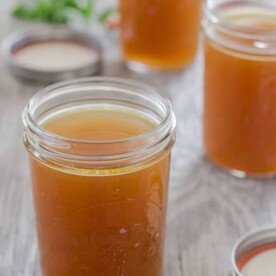
Homemade Vegetable Broth
Ingredients
- 2 leeks, trimmed, coarsely chopped and well-washed
- 5 carrots, about 1 pound scrubbed and coarsely chopped
- 2 large yellow onions, chopped (OK to leave skins on)
- 2 stalks celery, including leaves chopped
- 2 tablespoons olive oil
- Thick peel of 1 scrubbed organic potato, see note
- Cloves of one bulb of garlic, skins on, smashed
- 1 whole guajillo chile, optional (see note)
- 2 bay leaves
- ½ bunch flat-leaf parsley, coarsely chopped
- 2 sprigs fresh thyme or 1 teaspoon dried thyme
- 1 teaspoon black peppercorns
- 1 1/2 to 2 teaspoons Real Salt
- 3 quarts cold water
Instructions
- Heat the oil in a large wide pot over medium-high flame and sauté the leeks, carrots, onions, and celery, stirring frequently, until the vegetables are well browned.
- Add the remaining ingredients and the water to the pot. Bring to a boil, lower the heat, and simmer, uncovered for about 45 minutes.
- Place a colander over a bowl and strain the broth. Discard the vegetables. (see note)
- Line the colander with cheesecloth or a paper towel (or use a fine sieve), and strain a second time.
- Store the broth in the refrigerator for up to 3 days, or in the freezer for up to 3 months.
Notes
Nutrition
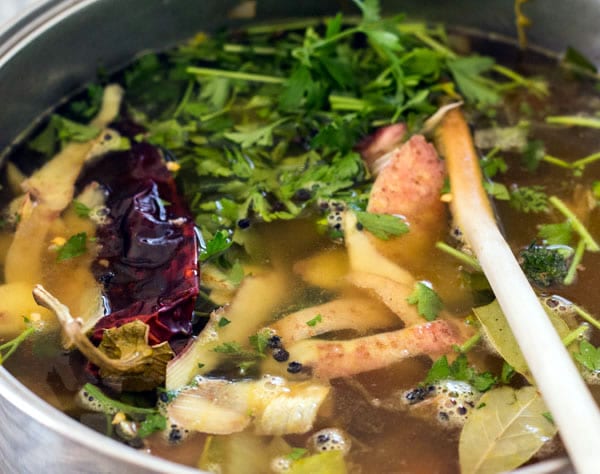
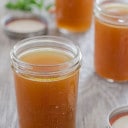

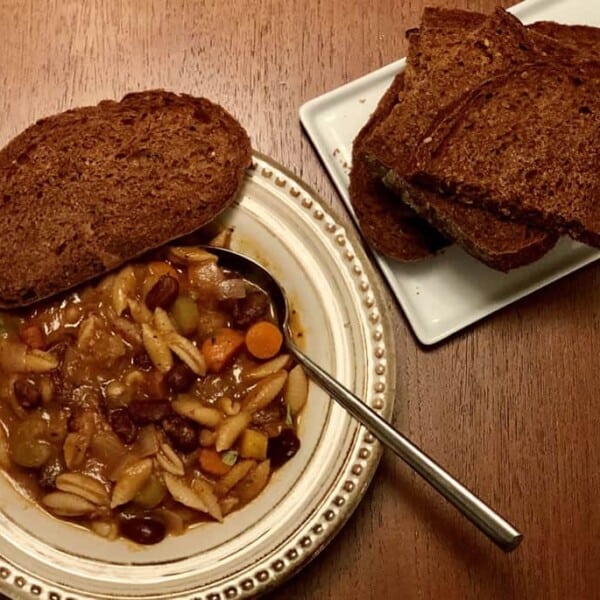

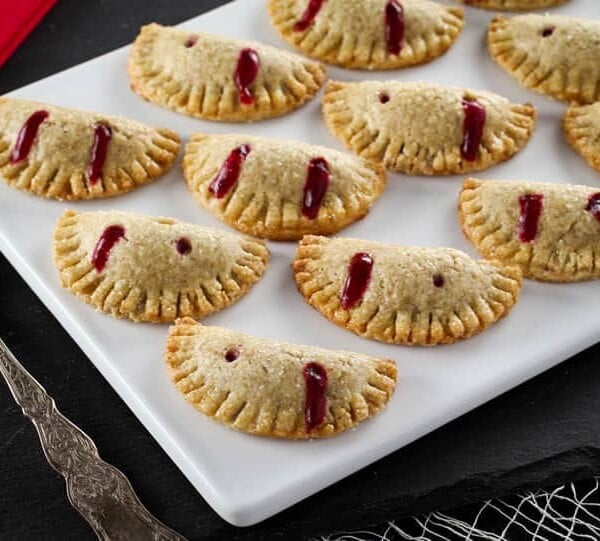
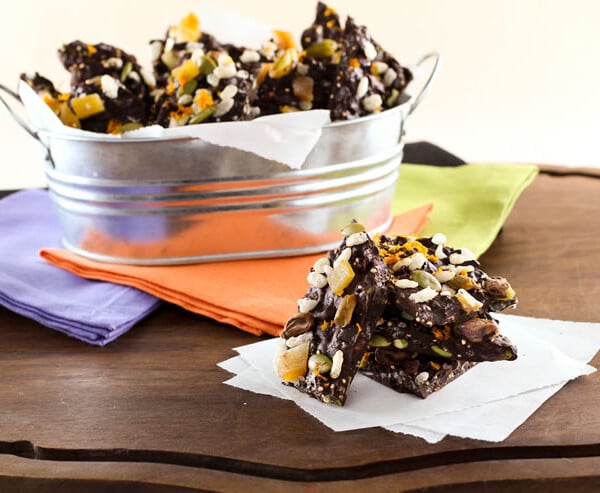















Great recipe Letty! You rock.
Dorothy–rockin’ you back! Thanks.
I’m excited for it to get cooler here and start stocking up on stock!
The guajillo chile may not add any heat “discernible” to a chile-eater, but if you are feeding people you don’t know, warn them anyway – if you’re nightshade-intolerant, the chile will make itself known!
Meant to add – my household does meat, so my favorite “broth” to store in the freezer is just what cooks out of sautee’d chicken breasts – it’s already concentrated, so takes up less room, and I add vegetables when I make soup. If you have a LOT of room in your freezer, corncobs are a good addition – they add a delicate sweetness, and are easy to remove at the end of cooking. Even before discovering a family member’s nightshade intolerance, I never added potato peels – they don’t taste like dirt when baked, but when cooked in broth, no matter how well you scrub them . . . . If I have to buy commercial, I’m more worried about some of the “normal” things to which family members are allergic (potatoes, pepper, garlic), so I look for those on the label first, then the “unprocessed additives.” Swanson’s, of… Read more »
Good point Sandy–about chiles, potato and nightshade intolerance. Plus other allergens. Thank you!
I agree–the freezer is a great place to stash broth ingredients so you have them when you want to make broth.
Pacific Foods sells a good “unprocessed” veggie stock in Tetra-pak as well.
It’s all about reading ingredients, isn’t it. 😉
Use a soup sock from Sur La Table! Or tie them in a cheesecloth sack and tie a knot. No straining needed! Just remove the soup sock. Voila!
I love the cheesecloth sack tip. The straining is the hardest part and with the sack–never again! Thank you!